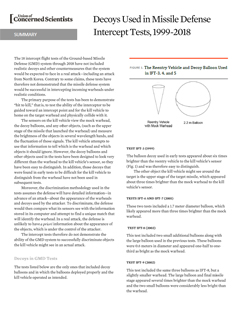Intercepting an incoming missile is not easy. That’s why the US Missile Defense Agency runs “intercept tests”: to see whether or not it can build defenses to detect and physically collide with a mock target warhead.
However, a critical shortcoming of the Ground-based Midcourse Defense (GMD) system is the fact that opponents could deceive it using countermeasures, such as decoys that are released alongside the warhead to confuse interceptors.
Yet, none of the 18 GMD intercept tests performed through 2018 have included realistic decoys and other countermeasures. Contrary to some claims, the tests have therefore not demonstrated that the system can successfully intercept incoming warheads under realistic conditions.
Many of the intercept tests have included decoy balloons, to test whether the kill vehicles can distinguish the mock warhead from other objects. However:
- The decoy balloons and other objects used in the tests have been designed to look very different than the warhead, so have been easy to distinguish;
- Information about the different appearance of the objects is given to the kill vehicle in advance, so that it can recognize which object is which;
- Decoys that prove difficult for the kill vehicle to distinguish have not been used in subsequent tests.
For these and other reasons, the GMD system has not demonstrated success in dealing with realistic decoys or countermeasures, and cannot be considered an effective defense.




